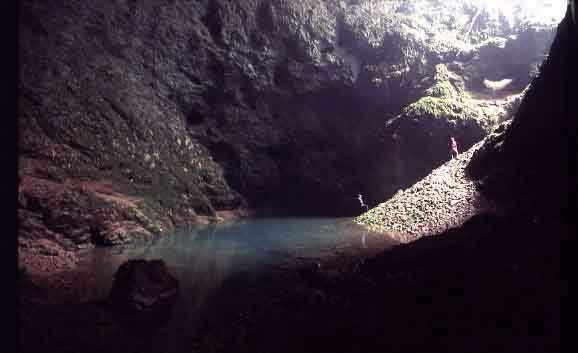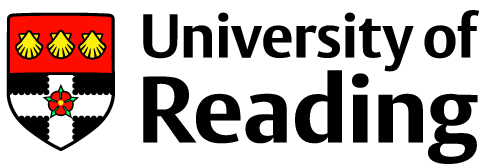ROTRAJ is a code to calculate air mass trajectories using input data
from global models or analyses. The trajectories are 3-D, following
the full flow resolved in the model and can be calculated forwards or
backwards in time. The input data is expected at regular time
intervals with a separate file for each time (as is typical for
re-analysis data). Primarily this tool has been used with model data
from the ECMWF, including re-analyses, operational analyses and
forecasts. The input data can be spectral harmonics (on model levels)
or gridded (model or pressure levels), although in specific
formats. The current version works with ECMWF or Reading IGCM
data. Some code editing would be required to set it working with other
global gridded data. The code is written in FORTRAN and linking with
the ECCODES (or predecessor GRIB_API) library is required to read the
GRIB format used for ECMWF global data.
References for the code itself and papers establishing its accuracy
The primary reference for the code.
UK Universities Global Atmospheric Modelling Project (UGAMP) Technical Report 44:
UGAMP_tech44.pdf
Methven, J. (1997)
Offline trajectories: Calculation and accuracy.
Tech. Report 44, 18pp., U.K. Univ. Global Atmos. Modelling Programme,
Dept. of Meteorol., Univ. of Reading, Reading, U.K.
Please cite this paper if you use the code to examine individual back trajectories and their origins (e.g., in atmospheric chemistry studies):
Methven, J., Evans, M., Simmonds, P. and Spain, G. (2001)
Estimating relationships between air-mass origin and chemical
composition.
J. Geophys. Res., 106, 5005-5019, doi:10.1029/2000JD900694.
Please cite this paper if you use the code to calculate domain filling trajectories to examine atmospheric structure in terms of composition or weather systems:
Methven, J., Arnold, S.R., O'Connor, F.M., Barjat, H., Dewey, K.,
Kent, J., Brough, N. (2003)
Estimating photochemically produced ozone throughout a domain using
flight data and a Lagrangian model.
J. Geophys. Res., 108(D9), 4271, doi:10.1029/2002JD002955.
See also
John Methven publications on University of Reading repository for examples of papers using ROTRAJ in diverse applications.
Below are some brief guides on how to use the ROTRAJ code.
Please email me if you intend to use this trajectory code in your
research and also notify me of any publications that incorporate
results from this trajectory model. Please cite the code, as indicated
above.
Follow this link to the code and some sample ERA5 data to test it
on. Also some trajectory visualisation software written in IDL
(language).
user_guide3_2001.pdf
A minimalist guide to using the code which describes the parameters of
the model (changed before compilation) and the variables which can be
changed after compilation through the use of FORTRAN NAMELISTs in the
jobdecks. It was written in 2001 so the details about the filepaths
for the code, jobdecks and programme library at CSAR, a decomissioned
supercomputing facility in Manchester, are out of date.
codebase directory contains:
rotraj3_era5_rdf.job
A sample UNIX jobdeck which puts the program together using the
"nupdate" function, creates the NAMELISTs, compiles the program and
then executes it. The nupdate function pulls together subroutines from
a program library and applies some modifications by editting various
lines. This is a good way to maintain the programme because the
programme library remains fixed for all users (at version 3) and any
user modifications or bug fixes are incorporated by nupdate.
Otherwise use the jobdeck below.
rotraj3_nonup_test.job
A sample UNIX jobdeck which specifies filepaths, creates the
NAMELISTs, compiles the program "rotraj3_era5_small.f" and executes it. You will need to change the filepaths and FORTRAN compilation line to be
appropriate for your computer system.
rotraj3_era5_small.f
The FORTRAN source code which was put together by nupdate. It includes
the latest standard updates including bug fixes and reading ERA5 data
using the GRIB_API library.
rotraj3_nonup_rdf.job
A sample UNIX jobdeck which specifies filepaths, creates the
NAMELISTs, compiles the program "rotraj3_era5_rdf3d.f" and executes
it. This job calculates 53792 back trajectories from 3D grid (41 x 41
x 32) which is the only difference from the test job which only
calculates 50 back trajectories.
visualisation is a directory containing IDL code for plotting simple trajectory outputs and also reverse domain filling trajectory calculations.
rdfplanner.pro uses IDL widgets to bring up a GUI window controlling plotting of reverse domain filling (or forwards domain filling) trajectory sets. This includes plotting maps on pressure and isentropic surfaces, as well as great circle cross-sections and the nearest set of trajectories from any point.
rdfplanner_guide.pdf
trajplot.pro
An IDL program to plot trajectories contained in one
trajectory file. All you need to do is to edit the file and at the
beginning of the main program set lcomputer=1 for running on a PC
(Windows) or lcomputer=0 for running on a UNIX computer.
Then start up IDL and enter: .run trajplot
Answer the questions and then a window should appear. You can plot
trajectories on a map using the `traj' button or draw any two
variables against each other using the `x vs y' button (for example
height versus time along trajectory). You can change the variables on
the x and y axes using the drop down menus on the top row of buttons.
You can change the limits of the map by editting the four values on
the second row down corresponding to: min(latitude), min(longitude),
max(latitude), max(longitude).
You can change the x-axis using the first two values on the third
row. The first number refers to the starting value for the axis and
the second number corresponds approximately to the range/30. Finally
you can also select different colour scales and reverse them if
desired.
rdftread.pro
An IDL procedure (function) that reads the trajectory
data files. You can edit this to select filepaths for the location of
trajectory data on your computer. Different values of IDATA can be
used to specify different directories. The default (IDATA=1) expects the
trajectory data to be in the current directory.
utraj-rf_uki2016100500
A sample RDF3D (reverse domain filling in 3-D) trajectory file output
by executing "rotraj3_rdf_sample.job". In this example the trajectories
are 1 day long. The trajectories are integrated backwards in time from
the "release date" 00UTC 5 October 2016 from a 41 x 41 x 32 release grid centred
over the UK and Ireland.
utraj-rf_rdg2016100500
A sample trajectory file output by executing "rotraj3_rdf_nonup_eg.job". In
this example the trajectories are 1 day long. The trajectories are
integrated backwards in time from the "release date" 00UTC 5 October 2016 from the 250 and 850 hPa levels on a small 5 x 5 grid of points near Reading.
ERA5_datafiles
is a directory containing one day of sample ERA5 global data at 6
hourly intervals (one file per record).
siuaYYYYMMDDHH
The spectral analyses on ECMWF model eta-levels at T255L137 resolution
(full model level set for ERA5 but reduced spectral trunction relative
to the native T639 used for ERA5) for one time: year YYYY, month MM,
day DD, hour HH (UTC). These are read and used by the ROTRAJ
trajectory code as the calculation proceeds. Look in
"user_guide3_2001.pdf" for ways in which you could use other input
data to drive the trajectory model.
giuaYYYYMMDDHH
Note that if you request specific humidity as a trajectory attribute
then you will also need the ECMWF giuaYYYYMMDDHH data files (since q
is always a grid-point field in the current ECMWF analysis
system). Here this is stored on the F128 grid (full Gaussian grid with
128 latitudes between pole and equator) which is consistent "linear
grid" for T255 spectral truncation. Note that ROTRAJ requires data on
the full Gaussian grid if running with spectral prognostic variable
data. If running with gridded prognostic variable data, then all
variables need to be on the same global grid (Gaussian or regular
lat-lon is expected).
sfamYYYYMMDDHH
You can request certain single level "surface" fields as trajectory
attributes but you will also need the ECMWF sfamYYYYMMDDHH data
files. Here a single field, boundary layer height, is stored on the
F128 grid.
|

